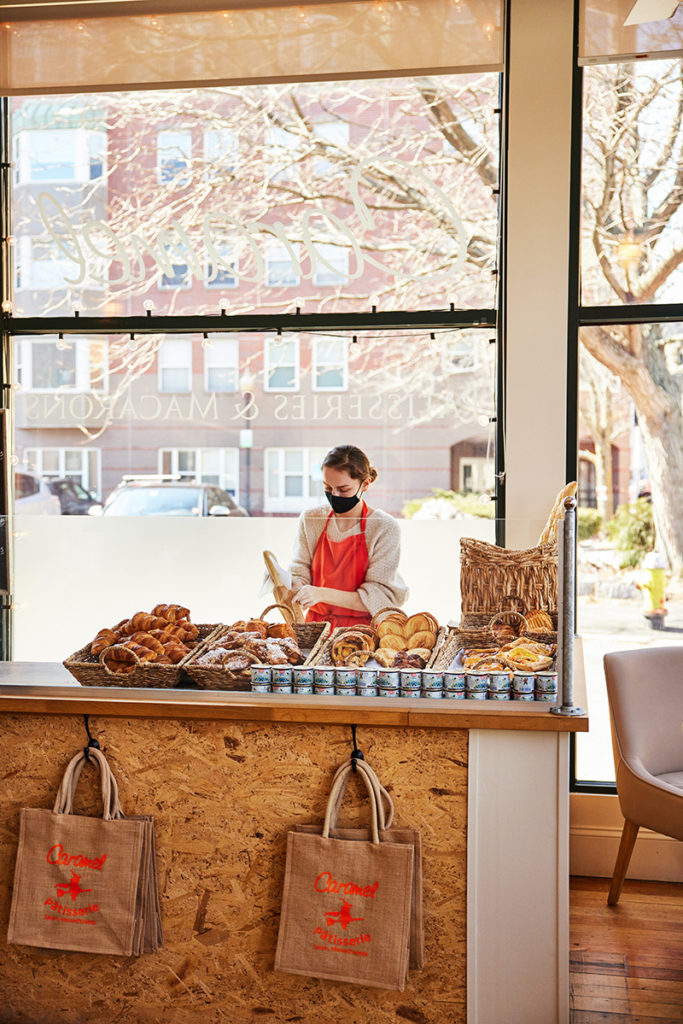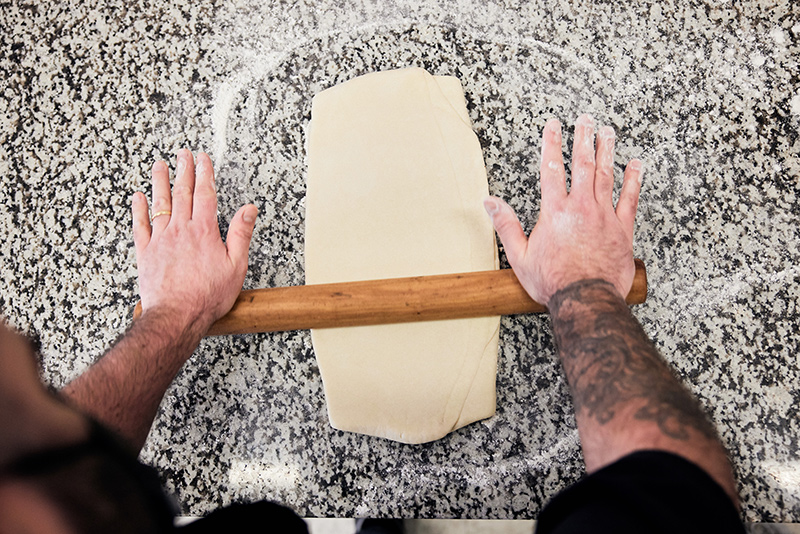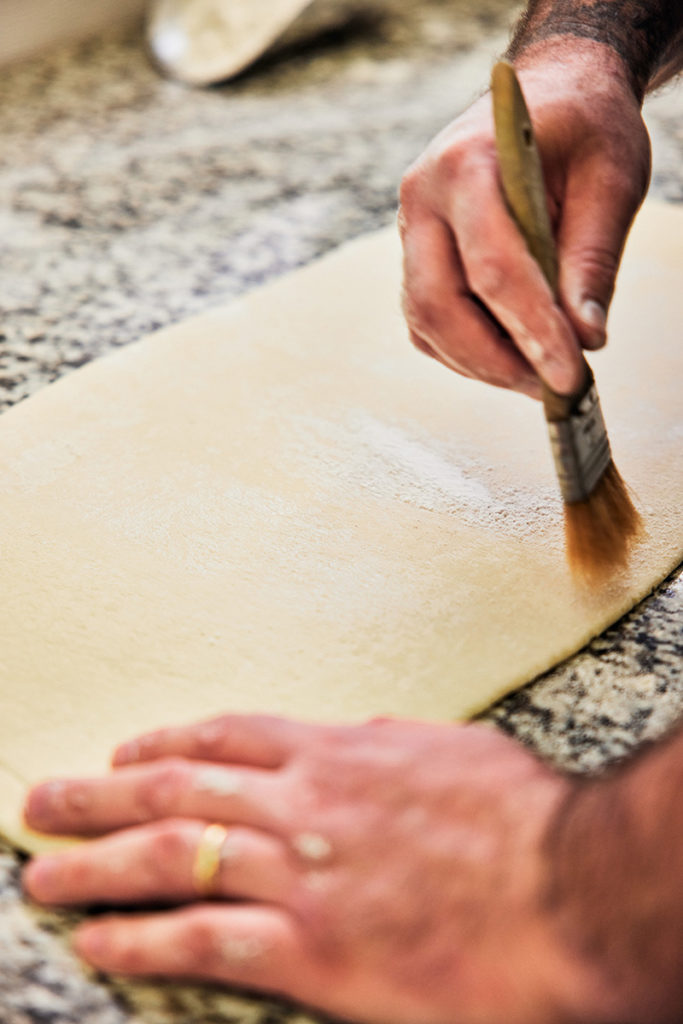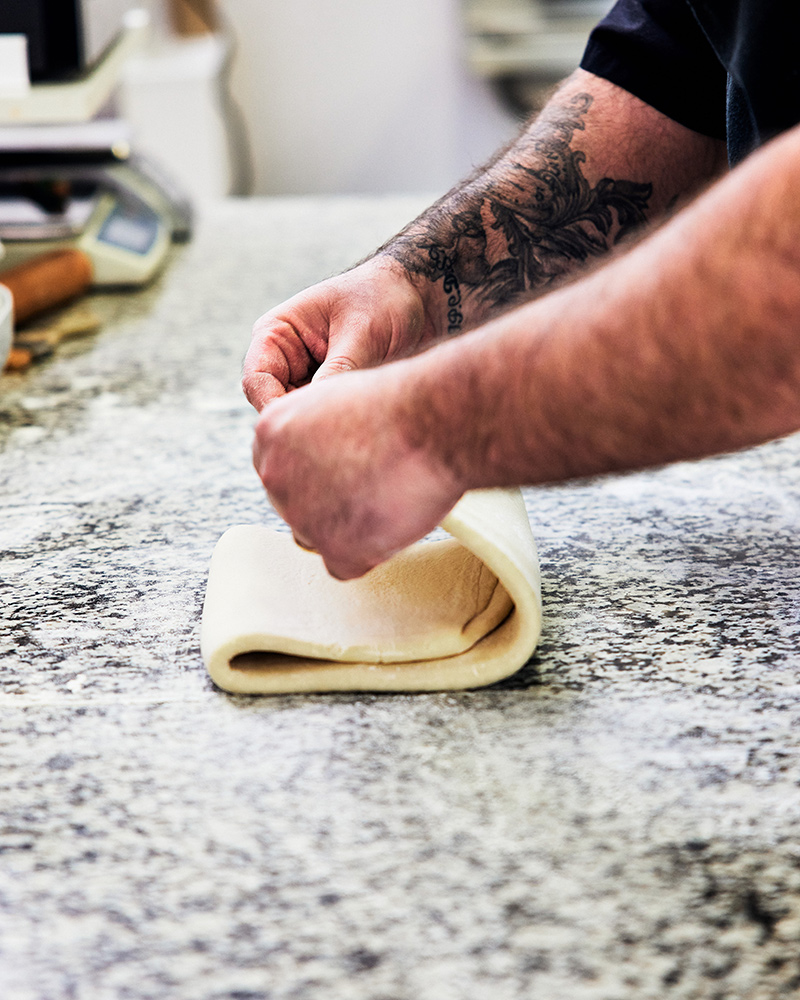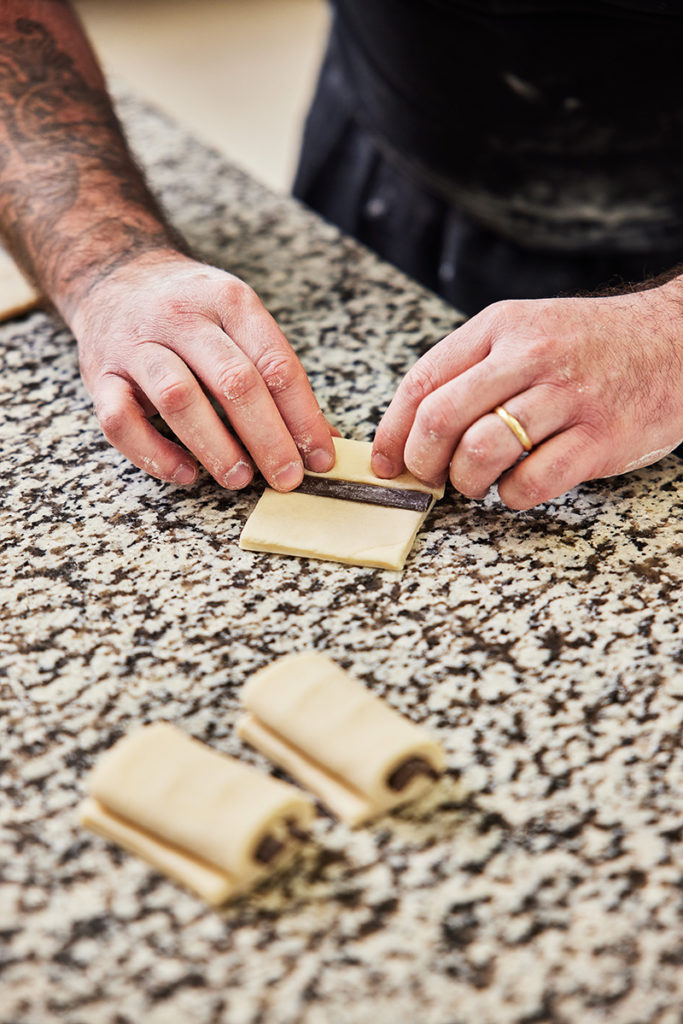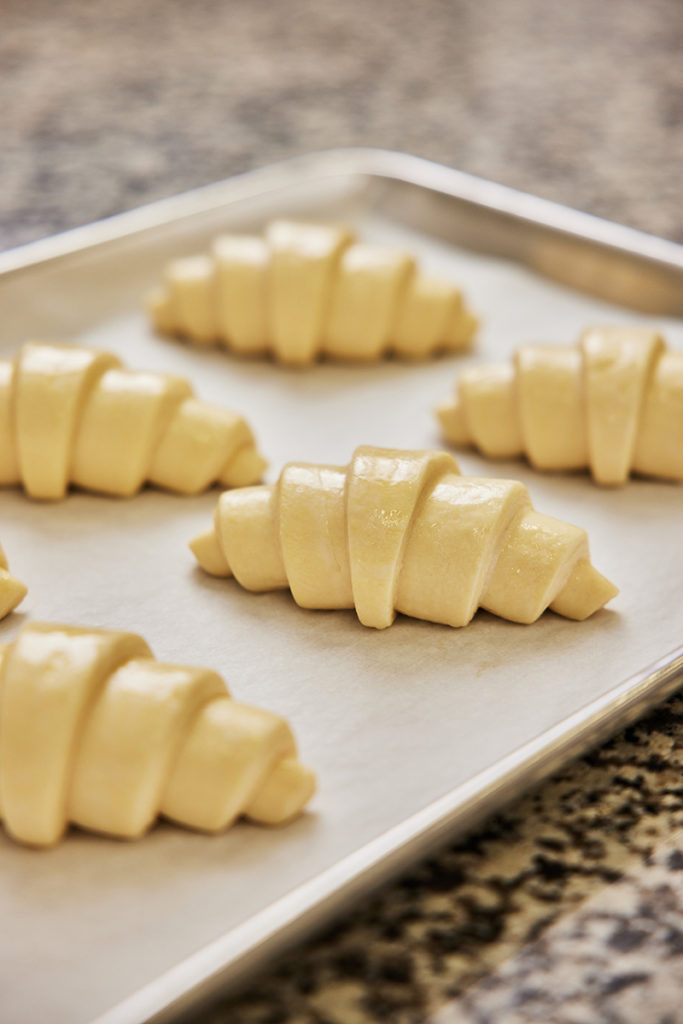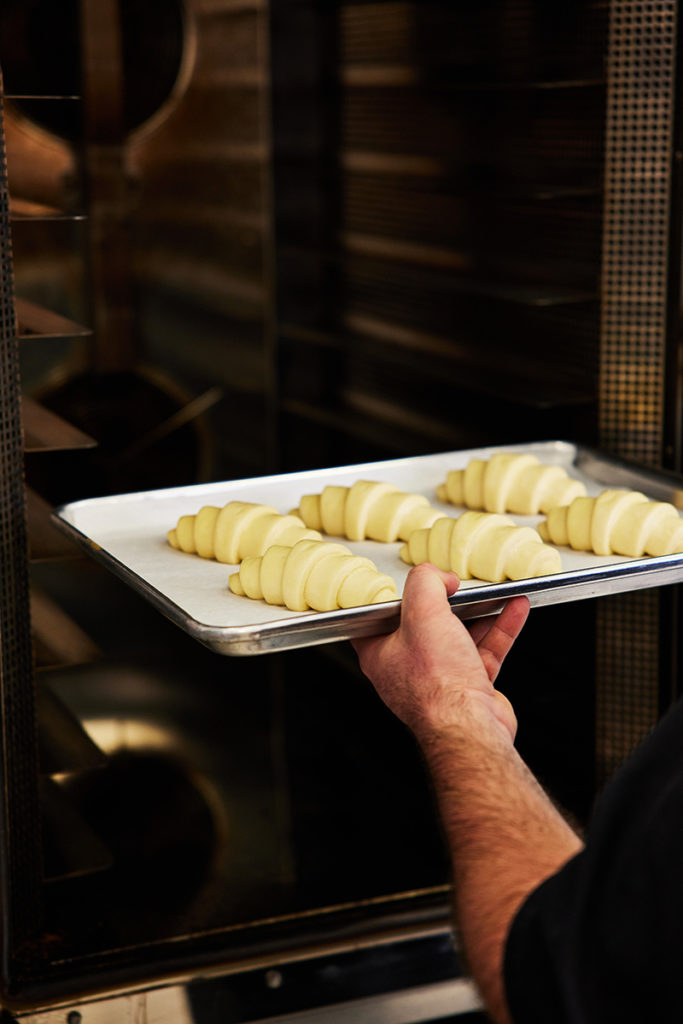Because of the pandemic, we can’t have “Paris in the Spring,” as the song goes. But we can savor the taste of it, thanks to Dimitri Vallier, pastry chef and co-owner with his sister, Sophie, of Caramel French Patisserie in Salem and Somerville. Vallier has a huge following not only for his macarons and artisanal French desserts but also his flaky, buttery croissants.
“People say, ‘Oh, my, they’re so good—they’re very light and not thick and heavy,’” says the chef, who has a chocolate croissant for breakfast each morning. The plain ones have that telltale honeycomb interior due to exquisite layering and a deep golden shell that shatters when you bite into it. His almond croissants cradle a rich nutty cream and his chocolate ones ooze with warm logs of dark Valrhona chocolate. Close your eyes when enjoying any of these treats and you easily could be in France.
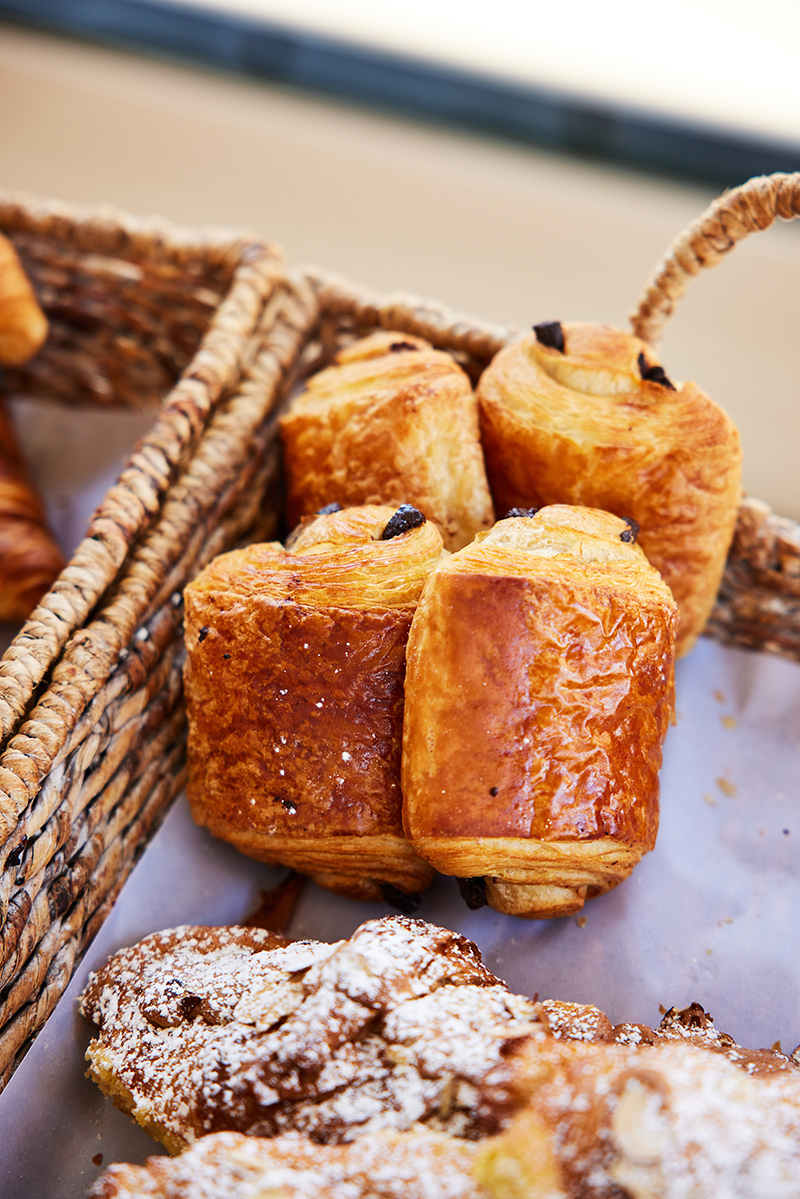
Vallier, who grew up in the Ardeche region of south-central France, was destined to go into pastry. His great-grandfather and grandfather worked as pastry chefs in the family-owned patisserie founded in 1931. “I liked to cook with my grandmother, making meringues and cookies when I was young,” says Vallier, “and learned how to make dough from my grandfather. I always loved pastry—the artistry, pretty colors, and the smell of chocolate—so decided to go to pastry school.” After two years learning to make pastries and croissants, the chef enrolled for a third year to earn his Master in Pastry degree. Then, he began perfecting his craft.
His first job entailed working for a pastry chef who had won the title Un des Meilleurs Ouvriers de France (One of the Best Craftsmen in France) in his hometown of Valence. “I became more precise with my techniques and learned to work with chocolate, sugar, and different textures of creams,” says Vallier. Then, he was off to America.
“In 2007, I got a job working for Paul Bocuse and his partner Gaston Lenôtre in Orlando at the brasserie Chefs de France [in Walt Disney world]. I made lots of plated French desserts, such as mousse and ice cream garnished with a tuille.” Two years later, Vallier moved to New York to create plated desserts for Daniel Boulud at Bar Boulud. A year later, Vallier moved to St. Tropez, France, to work at Le Belrose, a Michelin-star restaurant inside La Villa Belrose Hotel. He stayed for nine years, then found a job with a company in Pittsburg to open a French pastry shop called Gaby et Jules. One year later, Vallier and his sister decided to launch their own business.
“In France, I was always working with my sister,” says Vallier. “She was in service and we were a team. It was always our dream to open our own pastry shop here because we love the U.S.” The siblings first looked in Boston but found the rents too high. Then, at the suggestion of an immigration lawyer they knew, they investigated Salem, where the lawyer lived.
“We saw that Salem was super nice and super busy, and we liked it,” says Vallier. “We found the space, which was in a great location—on a busy street and near the water.” In 2015, Caramel French Patisserie made its debut. The Somerville location opened in 2017.
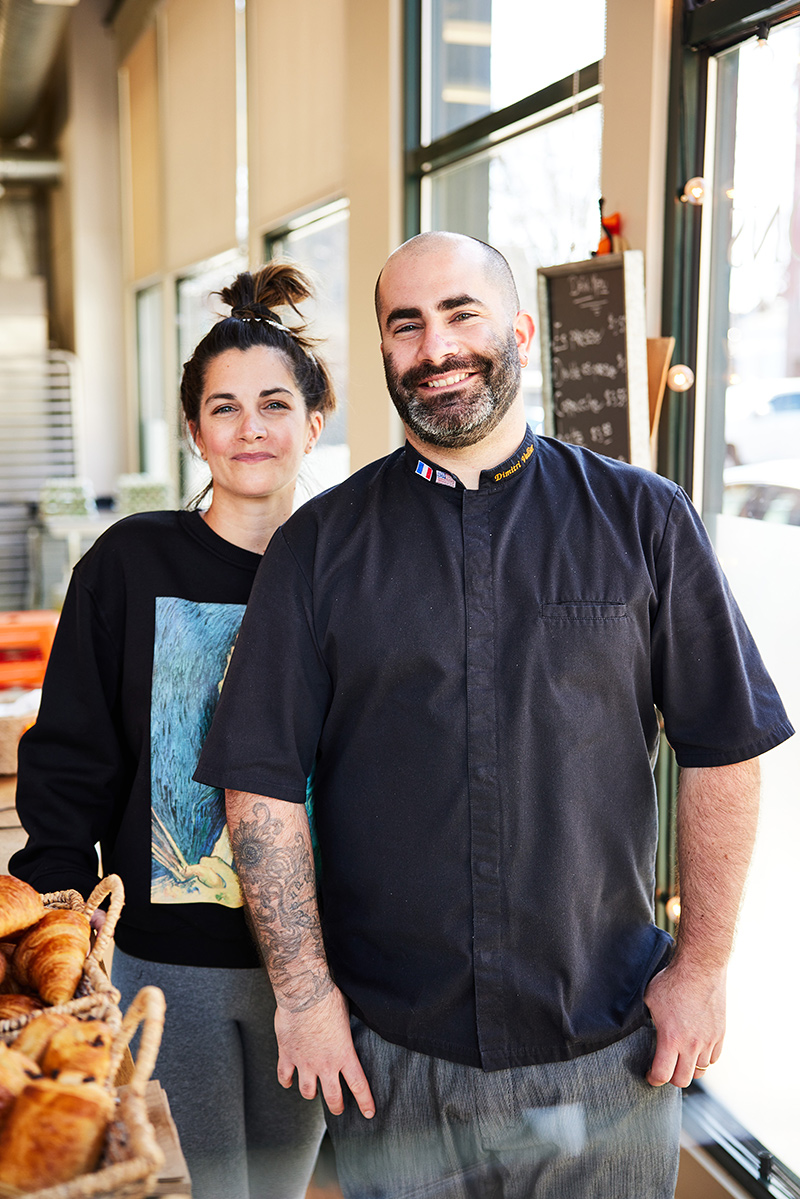
Vallier, who works exclusively at the Salem shop, crafts the jewel-like tarts, eclairs, and other classic French pastries each morning. He also bakes off frozen plain, chocolate, and almond croissants, including an allotment for his Somerville shop, which his sister drops off each morning, along with pastries. “It takes a long time to make the croissants—about 2 to 3 days between all the resting and folding of the dough—so we make, form, and freeze them at the start of each week,” says Vallier, who sells approximately 700 plain croissants weekly and 350 each of both the almond and chocolate ones.
“Sometimes customers come in and ask if the croissants are fresh,” says Vallier chuckling. “I tell them, ‘of course; a croissant must be eaten fresh!’ I bake off a certain amount every day and when they’re gone, they’re gone.”
Master Croissant Dough
If you would like to make your own croissants, be sure to take your time and follow the recipe, advises Vallier. Professional pastry chefs usually weigh their ingredients with a food scale, which you can find at most kitchen stores and online. You’ll also find French 45 flour online, which is very light. Fresh yeast is available in your grocery store’s refrigerator section and is preferable over the dry since it ferments more quickly and doesn’t contain additives. This recipe makes approximately 10 croissants.
Ingredients
15 grams (1 tablespoon) unsalted butter to make the dough
5 grams (1 teaspoon) fresh baker’s yeast
8 to 8.5 centiliter (5-6 tablespoons) of water at 20 degrees C (68 degrees F)
210 grams (1 1/2 cups) French 45 flour
30 grams (2 tablespoons) caster sugar
5 grams (1 teaspoon) whole milk powder
4 grams (bit less than a teaspoon) fine salt
125 grams (9 tablespoons) unsalted butter at room temperature for layering in the dough
Directions
1. In a small saucepan, melt the 15 grams of butter. Crumble the yeast in a small bowl and mix with the water. Sift the flour into a large bowl and whisk in the sugar, powdered milk, and salt. Stir in the butter-yeast mixture.
2. Work the dough by hand, pushing the ingredients from the outside to the inside. Stop as soon as the dough is homogeneous. If it is too firm, stir in a little water. Form the dough into a ball, cover the bowl with plastic wrap, and let the dough double in volume (about 1 ½ hours) in a warm place (about 71 degrees F).
3. Punch down the dough with your fist to remove the air and form the dough into a ball. Place the dough in the bowl, cover with plastic wrap and refrigerate for approximately 1 hour, or until the dough has doubled in size.
4. Punch down the dough a second time and form it into a ball. Wrap the dough in plastic wrap and freeze for 30 minutes.
5. Soften the 125 grams of butter by working it with a spatula. Sprinkle your work surface with flour and roll out the dough with a rolling pin into a rectangle that is three times as long as it is wide. The angles must be straight. Spread half of the butter over the bottom 2/3 of the dough. Fold the bottom buttered third of the dough over the second buttered portion. Then, bring the top unbuttered third of dough over the folded buttered portion, in the same way you would fold a business letter in thirds to place in an envelope. Wrap the folded dough in plastic wrap and place in the freezer for 30 minutes. Then, transfer the dough to the refrigerator to rest for 1 hour.
6. Repeat the above process with the remaining half of the butter. Wrap the folded dough in plastic wrap and place in the freezer for 30 minutes. Then, transfer the dough to the refrigerator to rest for 1 hour.
7. Sprinkle your work surface with flour and roll out the dough into a rectangle that is three times as long as it is wide. Fold the dough in three, lifting the bottom portion one-third of the way up the rectangle and then folding that portion over to create a single piece. Wrap the dough in plastic wrap and refrigerate for 2 hours.
8. Sprinkle your work surface with flour and turn the dough 90 degrees so that the opening “letter” edge is at the top of the dough. Roll it into a rectangle approximately the same size as the previous one, fold in three as for the first time: you have just performed the second turn. Wrap the dough in plastic wrap and let it rest again for 2 hours in the refrigerator. Proceed in the same way until you have made six turns, each time letting the dough rest in the refrigerator for 2 hours. On each turn, mark the top of the dough with your finger (gently push it into the dough to make a slight indentation) to remind yourself of the number of turns you have completed. Store the wrapped dough in the refrigerator until you are ready to use it.
To Shape and Bake Plain Croissants
1. Sprinkle your work surface with flour and roll out the dough into a 1-inch-thick rectangle that is approximately 35 inches long. Position the dough so that the longest part of the rectangle lies horizontally across your work surface. Using a ruler, mark the dough every 3 1/2 inches along the top portion of the rectangle. Using the ruler and a pizza cutter, cut the dough into triangles so that the points alternate between the top and bottom of the dough.
2. Cut a small notch (1/4 inch) in the middle of the base of each triangle. Gently stretch apart the two bottom base points of the triangle and place it flat on your work surface. Gently roll the triangle’s base toward the pointy tip until it forms a croissant shape with the tip portion underneath to prevent the croissant from opening during baking.
3. Arrange the croissants 1 ½-inches apart on a baking sheet lined with parchment paper. Brush the tops of each croissant with a beaten egg. Then, let the formed croissants stand uncovered for 3 hours in a warm place (78 degrees F) to proof.
4. To bake the croissants, preheat the oven to 360 degrees. Brush the croissants again with beaten egg and bake for approximately 15-20 minutes or until they are a rich golden brown.



